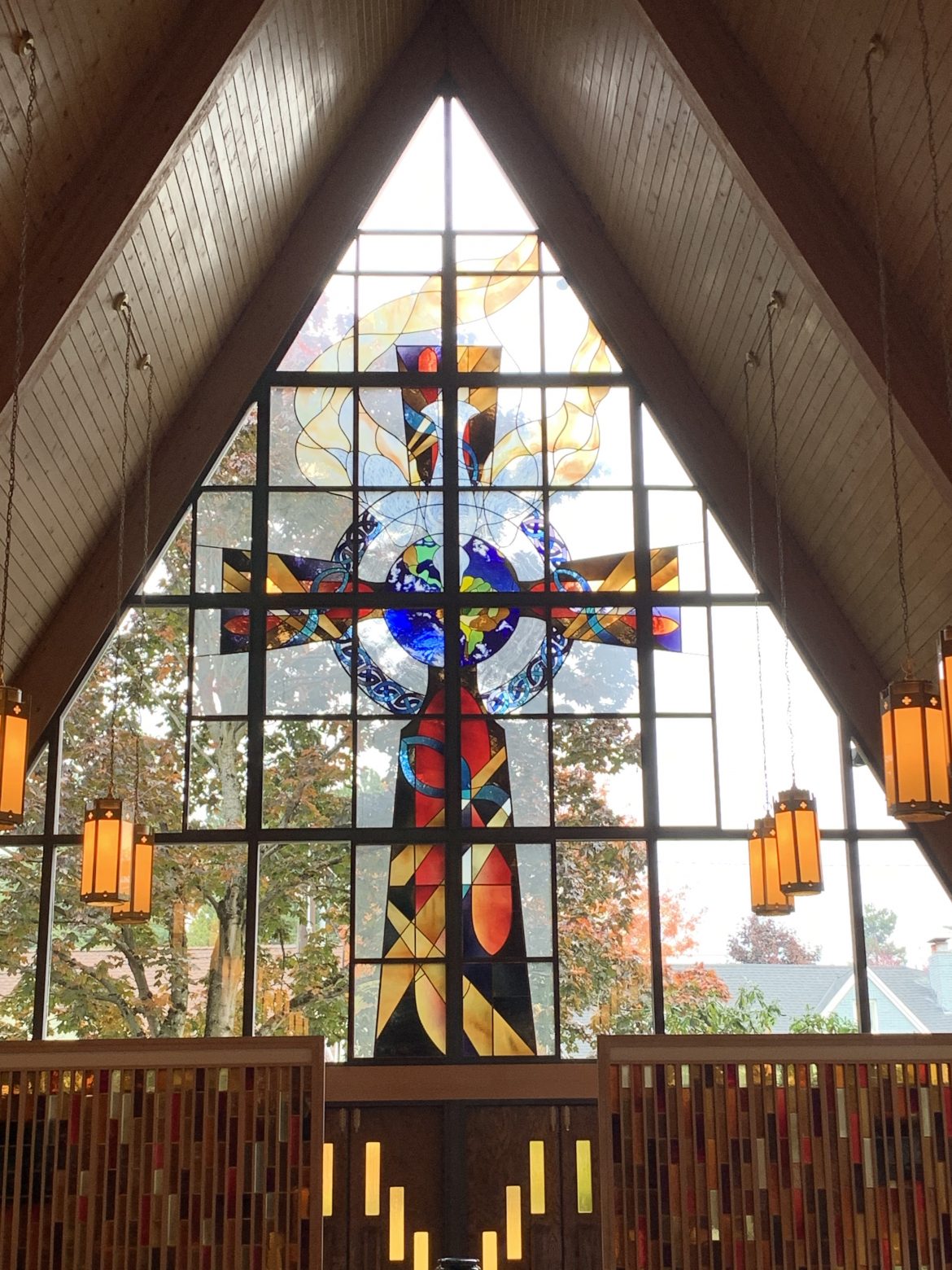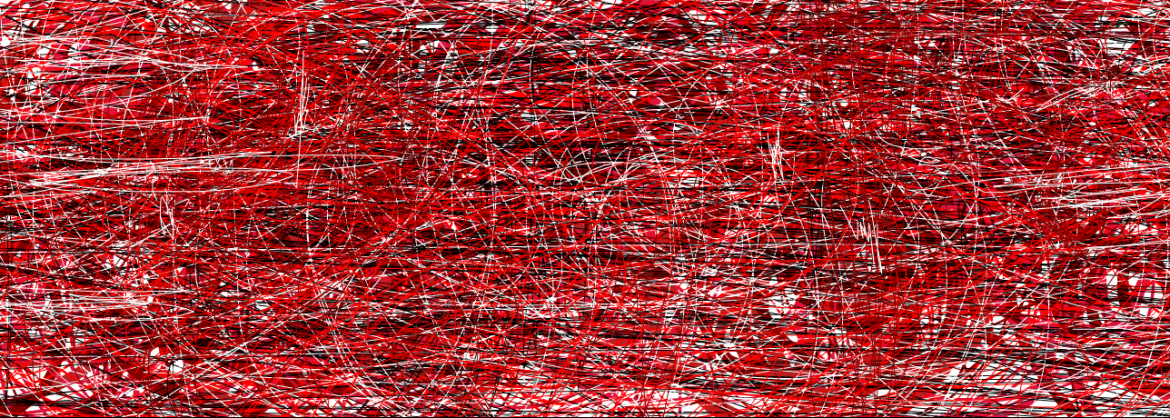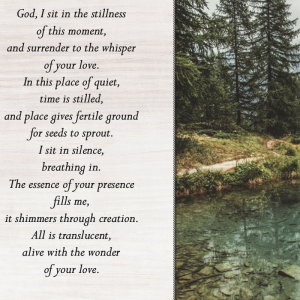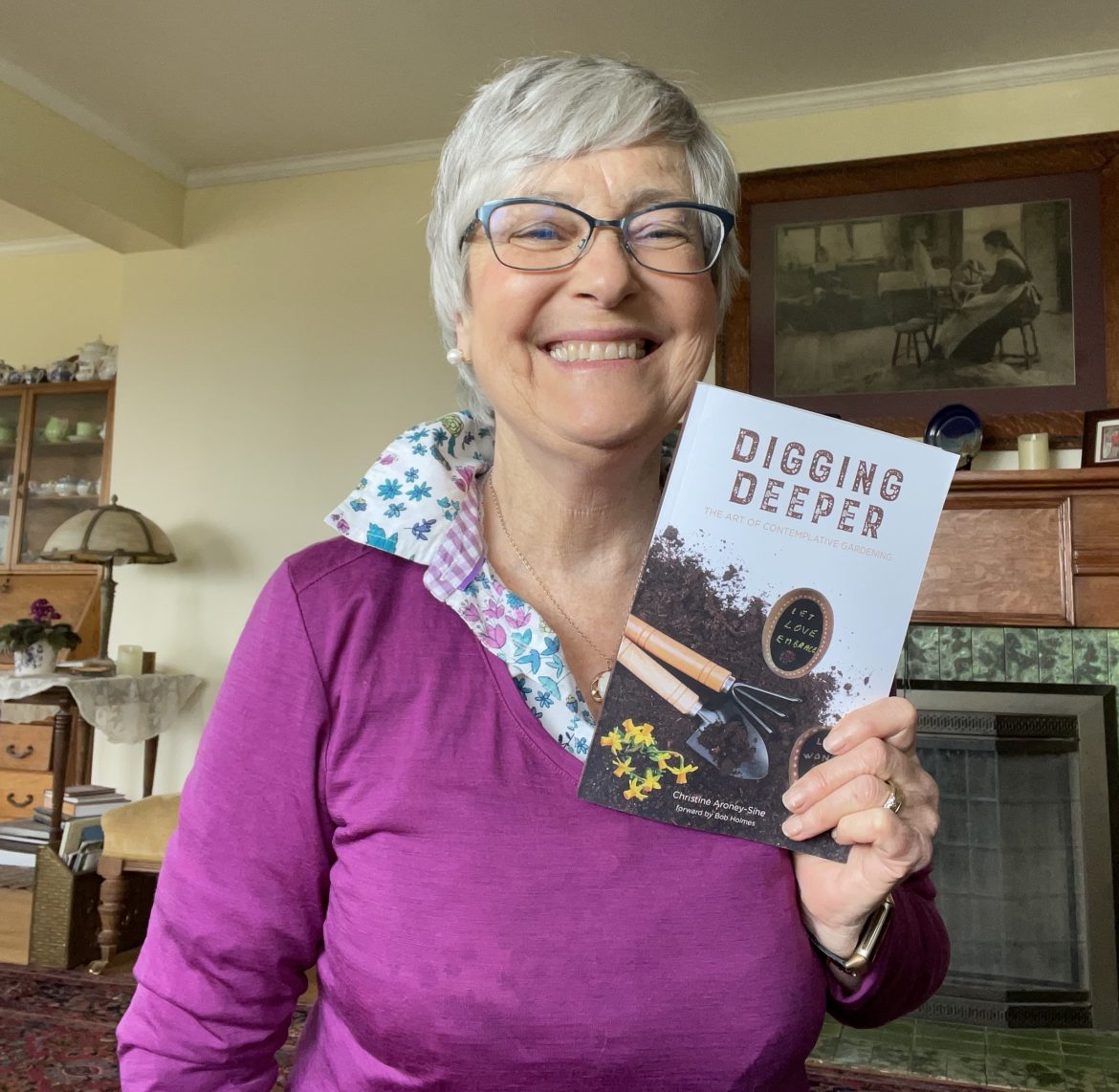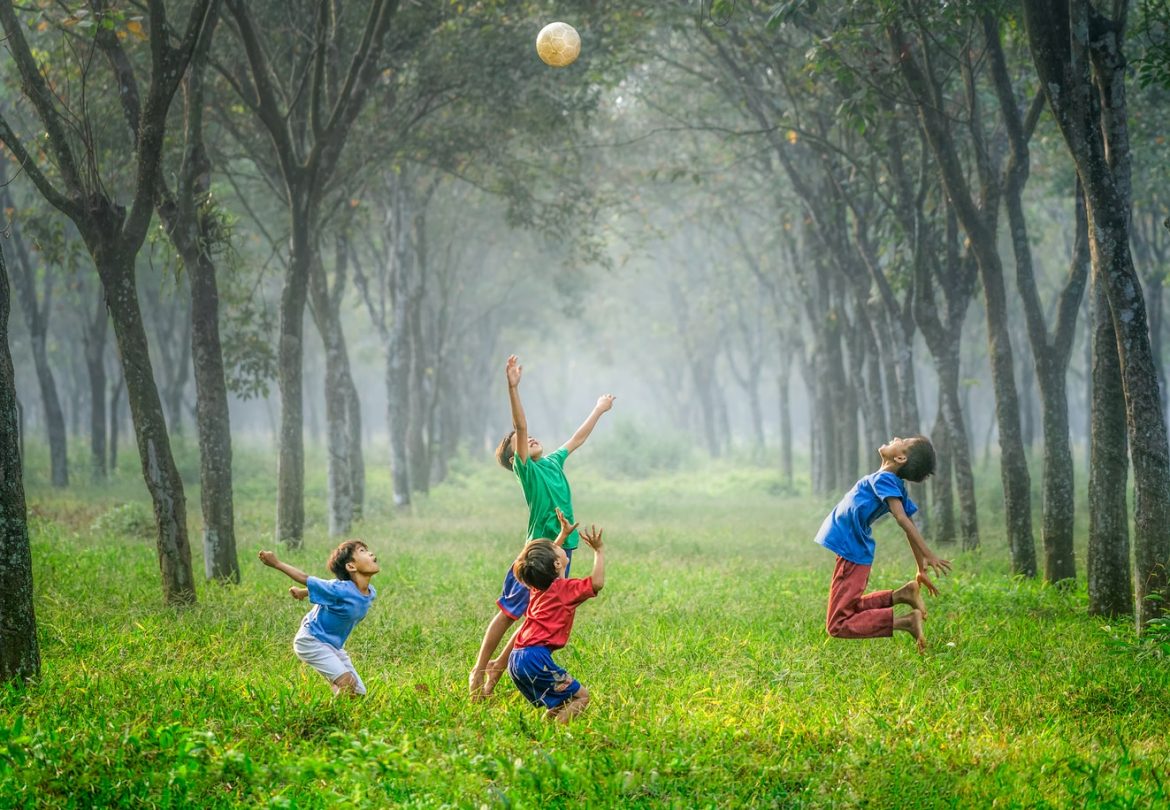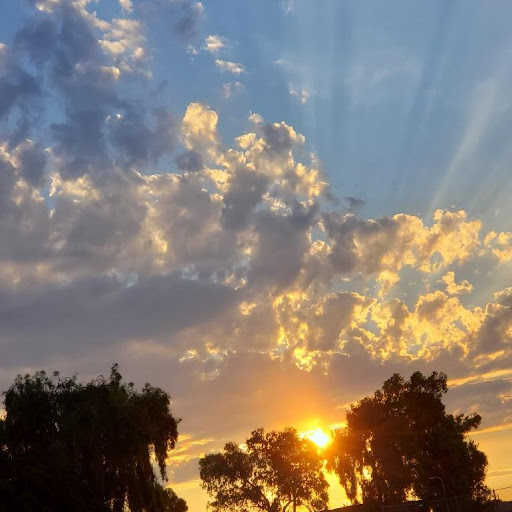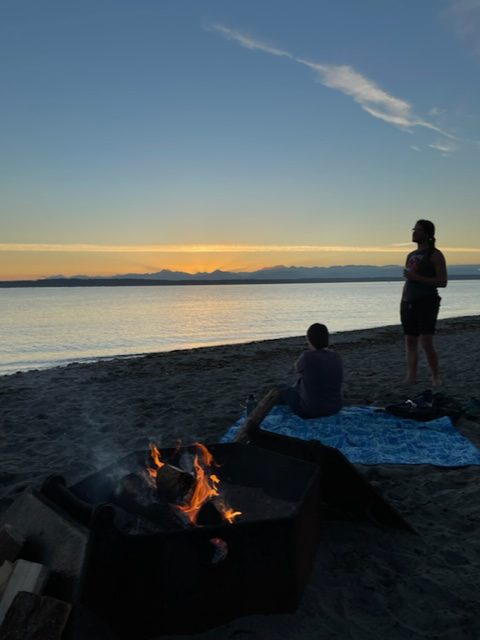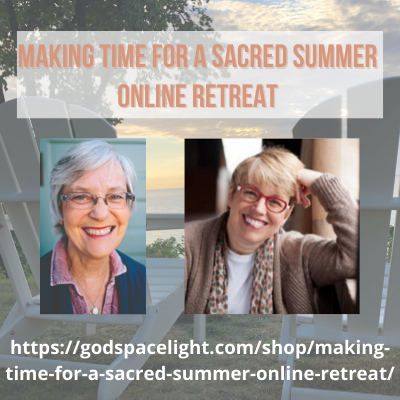A contemplative service with music in the spirit of Taize. Carrie Grace Littauer, prayer leader, with music by Kester Limner and Andy Myers.
Permission to podcast/stream the music in this service obtained from One License with license #A-710-756 with additional notes below:
“Što Oko Ne Vidje” By the Taizé community, copyright 2010, all rights reserved by GIA/Les Presses de Taizé
“Atme In Uns”, “Nothing Can Ever” Copyright and all rights reserved by GIA/Les Presses de Taizé
“Litany of the Beatitudes” Text and music by Kester Limner, 2022, shared under the Creative Commons License, Attribution (CC-BY)
“Wisdom of Saints” Music and lyrics by Kester Limner, shared under the Creative Commons License, Attribution (CC-BY)
Thank you for praying with us! www.saintandrewsseattle.org
Editor’s Note: As we explore our current theme of Restoring Rhythms and Seasons, finding ways to connect to the season you’re in is part of it! Did you know we have several resource pages that can help you with that? No matter what meteorological season you are in, you will find pages, products, and posts to ground your spirituality in God’s gift of creation on our Creation Spirituality resource page. Creation care, gardening topics, and other resources found here are designed to help you connect practically to the earth and its care as well as find grounding spiritually.
We also have another page chock-full of ways to connect to the rhythms and seasons you are in – our Seasons and Blessings resource page. Covering specific blessings as well as holidays that fall outside of church purview, this page also features resources for Spring, Summer, Autumn, and Winter. By way of example, for those in the Southern Hemisphere as of this posting, our autumn resources may be more relevant for you.
Here in the Northern Hemisphere, we are currently experiencing the gifts of spring. Please enjoy this repost of one of our most popular spring posts, originally found here. Christine and Tom are anticipating this gift soon, though the garden strawberries aren’t ready yet this year!
The Gift of Strawberries
I appointed you to go and bear fruit, fruit that will last. (John 15:16)
These words that Jesus spoke to his disciples really caught my attention the other day. Last week, I picked our first strawberries for the season and each day now, I go out hoping that there will be more. Tom and I relish the fresh berries I pick each day from the garden when the season is in full swing.
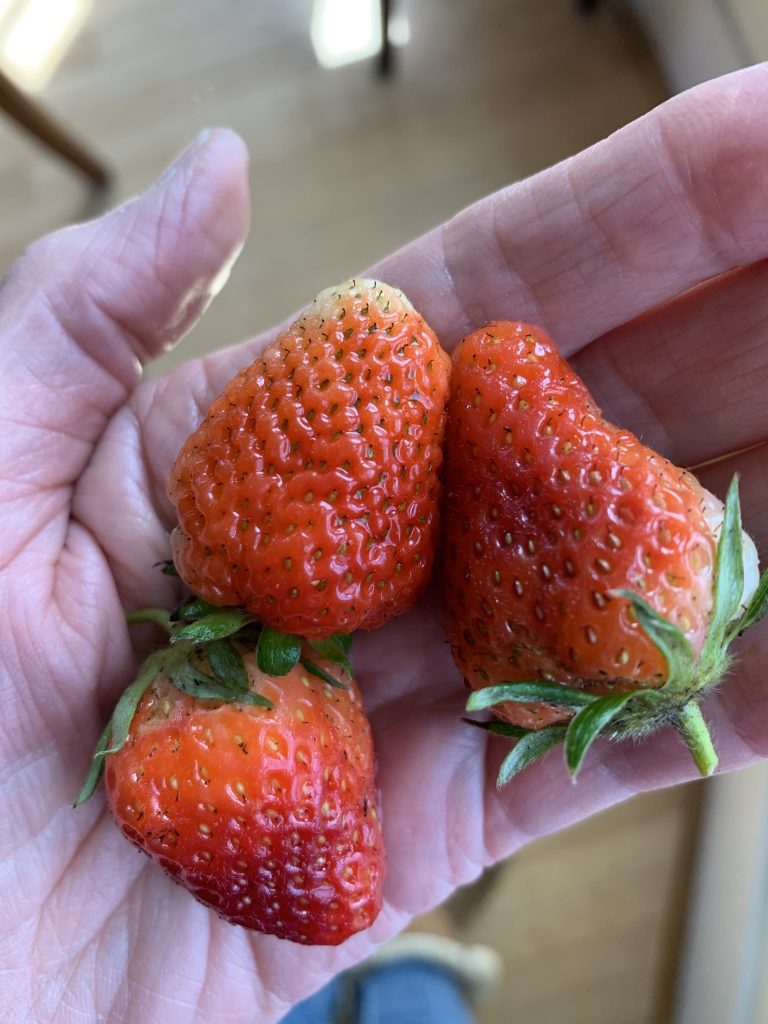
First strawberries
At the moment, there are only enough strawberries to whet our appetites – just one or two a day, but when the strawberries are in full season in a couple of weeks, I will need to pick them every day because strawberries only last a few days at their best. They are meant to be savoured and enjoyed in the brief few weeks of the season. Yet we want them to last. Not only do they taste good, but they are nutritional powerhouses containing not only high levels of vitamin C but also the mighty antioxidants anthocyanins, ellagic acid, quercetin and kaempferol, which all have been shown to have protective effects against certain types of cancer.1
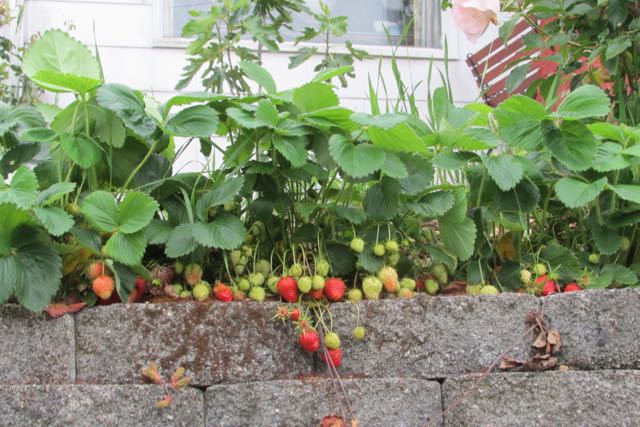
Hoping for strawberries galore
What does “fruit that will last” really mean? It occurred to me as I picked my strawberries that they may only have a short life span but they last as long as God intends them to. They last until the next berries – usually the blueberries – are ready for harvest. They give us that spring boost of energy our bodies need, at the time that we need it. Yes we can dry them, freeze them or make preserves which maintain a goodly portion of the nutrients, but they never taste as good or provide as much nutrition as when they are in season.
What is your response?
Visit your local farmers’ market if you can, and buy yourself a basket of whatever fruit is in season. Sit and contemplate the basket of fruit. Smell it. Handle it. Eat it slowly, relishing the sweet, fresh flavour of it. From a spiritual perspective what do you think it means to bear fruit that will last? How long do you think your fruit is meant to last – a week, a month, a year? Are you like a strawberry, providing an intense but short lived seasonal burst of flavour, or are you more like an apple, able to be stored naturally without chemicals for several months?
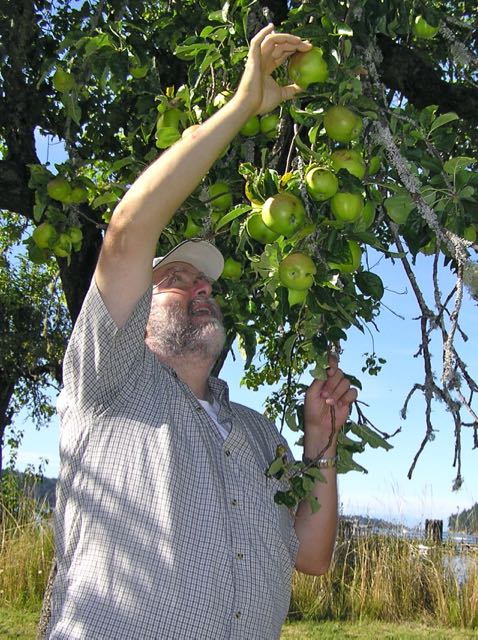
Harvesting apples
Strawberries herald the beginning of the season with lots of other berries and perishable fruit soon to come. We don’t need them to be stored for long periods of time, unlike apples and pears which are harvested in the autumn, at the end of the harvest season. They can be stored as food for the long months of winter when there is no new fruit to be harvested. Historically, fruit that could be stored would hopefully last throughout the hungry seasons of winter and early spring when no new fruit was produced.
In a world that picks green and sprays with chemicals to extend the shelf life of everything from strawberries to apples, the significance of fruit that will last is often lost on us. So much of the “fresh” produce in our supermarkets, is not fresh at all. It lasts far beyond its intended lifespan because of the artificial chemicals that have been added. Some of it is injected with sugar and even vitamins to make it taste more “natural”.
I wonder how often we do the same thing with our spiritual fruit. We think that “fruit that will last” means it will go on for ever and so we do all we can to artificially preserve it beyond its natural season.
What is your response?
Now visit your local supermarket and buy a basket of fruit that is not in season. Sit and contemplate your basket of fruit. Handle it, smell it, and eat it slowly. Does it taste the same as you remember it tasting when it was in season?
Sit quietly in the presence of God and think about your spiritual life. What fruit have you borne that you have tried to preserve beyond its natural God ordained season? Is there fruit that has become tasteless and nutritionless because it is out of God’s season for it? What is God asking you to do with this fruit?
Listen to the song below, but instead of “breathe new life in me” substitute: “Breathe new fruit in me”
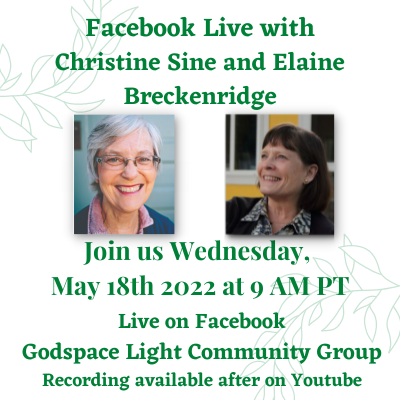 Join Christine Sine and special guest Elaine Breckenridge on Wednesday, May 18th at 9 am PT for a discussion on Restoring Rhythms and Seasons. Live on Facebook in the Godspace Light Community Group. Can’t join us live? Catch it later on youtube!
Join Christine Sine and special guest Elaine Breckenridge on Wednesday, May 18th at 9 am PT for a discussion on Restoring Rhythms and Seasons. Live on Facebook in the Godspace Light Community Group. Can’t join us live? Catch it later on youtube!
Editor’s Note: Lilly Lewin is traveling still, and would like to introduce us to her friend and collaborator Archie Honrado!
This painting invites us to pause deeply and try to see beyond what is being shown.
I was about to write this article when I heard about the Supreme Court Draft Opinion on Roe v. Wade leaked to the press. My knee-jerk reaction to this news was determined by my politics and theology on abortion. Someone in me wants to say something different; I went to my prayer practice called Welcoming Prayer, but at first I was not aware that I was allowing my Welcoming Prayer practice to steer my reaction. I didn’t even realize this when I wrote the first draft of this article. This welcoming prayer helped me consciously to not go into my politics, my cultural constructs, or even in my theology. Instead, I could go to my heart on this divisive issue or any issues.
But, wait, our hearts are formed by our culture, politics, theology and other things of this world, right? Yes, we are the fruit of the world we live in, but even at our best self, this person, the old Adam, our false self, as Fr. Richard Rohr would say, is still just the best version of our false self. There is a mysterious heart in us. It constantly passes ephemerals and moves into the true center of our being, our true self – the beloved one of Christ.
This mysterious center (where our false and true self lives) is our heart, mind, and soul united in Christ. There is an inner mystic-self in all of us where a Philippians 4:8 way of seeing lives. This way of seeing is like a seed planted in us but unless cultivated and worked on, it will lie dormant.
To crack this dormant seed, we have to listen to our unconscious (the depths of the soul if you will) so our minds can be nudged to welcome what movement the conscious-self is going through and be open to give praise, and glory to Jesus.
To make my way to my unconscious, first, I have to stop by the door, stand on the ‘Welcome Mat’ to welcome my emotions and thoughts that exist in my consciousness and be indifferent (suspend my reaction) towards my impending judgment and my opinion on the issue at hand. This welcoming posture takes me into a thin place. This thin place is a bit different from a thin place where the presence of God can be felt so close, this thin place is a place of holy tension- imagine Jesus sorrowful in the Garden of Gethsemane. To be in this thin place, this liminal space is to practice kenosis, (dying to self, or Jesus saying: “not my will be done but yours”) and to be aware of the Presence of the Holy.
This process of discernment, indifference, and welcoming I mentioned are practices I’ve learned from Ignatian spirituality and the contemplative Welcoming Prayer teaching. Here’s a Welcoming Prayer practice to try: (condensed from Cynthia Borgeoult book: “Centering Prayer and Inner Awakening”, 2004, Cowley Publications)
Here’s the simple Welcoming Prayer process:
- Focus and Sink in
- Welcome
- Let Go
Let’s work on Roe v. Wade
Roe v. Wade issue:
- Focus on what upsets you about this issue, feel the sensation in your body, or your emotions. Do you feel angry, fearful, disappointed? Can you feel present to these emotions, how are your emotions manifesting – jaw clenched, stomach in knots, breath short?
Don’t try to change anything, just stay present without psychoanalyzing yourself, lest you risk repression.
- Welcome– Be ready for this seemingly counterintuitive instruction. Focusing on your emotion, you are now steeped in roiling emotion and yet, you begin saying: “Welcome anger” (or whatever the emotion is), by welcoming the emotion we create an atmosphere of inner hospitality. This is where awareness and surrender converge, at the center of your being where we are united with Christ. This is the space aligned with Christ and your centered self, where you can decide what you will do with your issue at hand and you will be doing it from consciousness, not reactivity. Remember what we are welcoming is not the issue itself but the feelings triggered by the issue.
- Let Go- Take your time on this step. Gently go back and forth to the Focus and Welcoming steps until you feel some tenderness arising, then you say a “letting go” for now on whatever emotion arose or what decision you made about the issue. Finally, Say Mary Mrozowski* prayer at the end of the third step:
I let go my desire for security and survival.
I let go my desire for esteem and affection.
I let go my desire for power and control.
I let go my desire to change the situation.
*Mary Mrozowski created the Welcoming Prayer found in Cynthia Borgeoult’s book “ Centering Prayer and Inner Awakening”
Evelyn Underhill, the great 20th-century English mystic introduced the idea of practical mysticism. Underhill’s insights and her prophetic voice reverberates today in our world. Evelyn Underhill lived between two horrific world wars that gave her the courage and stamina to walk the darkness of the soul believing that the way to see and to be human does not end in the dark.
This darkness we are now familiar with is light, like Underhill, we are facing the same walk in the dark and the same hope that invites our faith to be awakened. Why is practical mysticism needed today? There’s a deluge of self-help ways that carry the same proposition as the mystics offer, but the Self-help movement’s promise of finding one’s authentic true self comes up short. Today’s self-help way of seeing leads to a dark tunnel that appears to be a dead end. With self-help no matter how much we try to live our authentic true self, if we are unaware of this thin and dark place, the soul’s journey will be like a walk into a dark tunnel that appears to come to a dead end. Then, it may appear that I only existed in my false-self, and conceivably reaction to issues that arise at a given moment would be pure human instinct leaving the divine breath living-in-us out. Can you imagine what that would be like? And, yes, there is a way of seeing and being in such a thin, dark place where darkness is light, where darkness becomes Light.
* * *

Archie Honrado is a spiritual director, prayer retreat guide serving urban youth workers and a certified substance abuse counselor. Archie was part of Youth Specialties Soul Shaper Board and Soul Care Team together with Lilly Lewin. Archie and Lilly for over a decade have collaborated and co-curated prayer sacred spaces for the National Youth Workers Convention. Archie lives in the Redwoods, the land of Yurok Indigenous people in Northern California with his beautiful wife and two young boys.
Featured image is “Scratch” by Sandpaper, used under CC-YB. Image was resized and cropped. As an Amazon Associate I receive a small amount for purchases made through appropriate links. Thank you for supporting Godspace in this way.
Pause for the Day – find a pleasant focus in this downloadable set of prayer cards inviting you to pause and restore. This set of ten prayers include three morning, three evening and four general prayers for the day. Each prayer is paired with a photo to help you focus and enter into that still place where you can hear God’s voice. On the back of each card is a short reflection or activity to deepen the impact of the prayer. This is a downloadable pdf. You may also enjoy its companion set of Prayers for the Day – 11 more prayers by Christine Sine paired with beautiful imagery by Hilary Horn.
We are proud to announce Christine Sine‘s latest book is available for purchase on Amazon! Digging Deeper: The Art of Contemplative Gardening is chock-full of lovely insights and contemplative gardening encouragement. From the Foreword by Bob Holmes, Contemplative Monk:
Digging Deeper: The Art of Contemplative Gardening is chock-full of lovely insights and contemplative gardening encouragement. From the Foreword by Bob Holmes, Contemplative Monk:
Christine is a genius, an expert and trusted guide in helping you to explore, nurture and unfold the miracle of working in the soil and allowing God to create through your hands. Little by little, day by day, we are transformed by the work of our hearts, creating with God… Grounded and embodied spirituality is an anchor into the eternal. Contemplative Gardening helps do that.
Christine Sine is a master. Listen to her.
But what exactly is this book all about? In Christine’s own words:
Available in paperback for $18.99 and on Kindle for $9.99, this book is sure to inspire your contemplative spirituality and nurture your practical life. As Jerusalem Jackson Greer stated in her review,
Digging Deeper is a beautiful companion for anyone who is looking for a mindful and sacred way of connecting their bodies to their souls, and their prayers to actions. All you need is a bowl, some dirt, this lovely book, and the desire to slow down and dig deep.
Click here to purchase, or for more information and reviews!
 Join Christine Sine and special guest Elaine Breckenridge on Wednesday, May 18th at 9 am PT for a discussion on Restoring Rhythms and Seasons. Live on Facebook in the Godspace Light Community Group. Can’t join us live? Catch it later on youtube!
Join Christine Sine and special guest Elaine Breckenridge on Wednesday, May 18th at 9 am PT for a discussion on Restoring Rhythms and Seasons. Live on Facebook in the Godspace Light Community Group. Can’t join us live? Catch it later on youtube!
By Allison de Laveaga — Editor’s Note: This is a repost, with permission. You can find the original here.
Play. For kids it comes easily. But for adults it’s not something we do that often. When was the last time you played a game, acted in a skit or picked up some crayons?
It had been a long time since I had done any of these things—until I attended a contemplative retreat a few months ago. But that’s exactly what we did at the retreat. We played, we laughed, we relaxed—and something sacred happened.
Going into the retreat I thought it would be serious and sober, full of challenging readings and talks. I thought we would be studying spiritual classics—maybe excerpts from St. Augustine or St. Francis. I expected an intellectual exercise. Instead, the first night of the retreat, we were asked to bring blankets and a pillow to our meeting room. There, snuggled beneath our blankets, the facilitators offered a Psalm and some opening comments and then read children’s picture books. At first I was surprised and disappointed that we were reading these simple stories. What was this about? Slowly though, I began to relax into the rhythm of the words and I almost fell asleep. I shuffled off to my bunk room in a state of peace, feeling like I was five again.
The next day we gathered and read Psalm 104, a Psalm about God as creator. We listened to Fernando Ortega’s beautiful rendition of the song and then we were paired up, each given a section of the long Psalm to “act out” with hand motions and movement. It seems a bit contrived now describing this, but the activity felt freeing and creative. I wasn’t being asked to analyze anything, as we so often are in our culture, particularly church culture, but I was invited to experience it with my body. Then we were sent off for the afternoon to spend time alone in nature.
“I can’t believe it,” I told the facilitator I met with for a one-on-one spiritual direction session that afternoon. “I’ve left all my worries behind. I’m so relaxed.”
Later that day, waiting for the evening session, I spent some time at the art station the facilitators had set up. I used to love to draw as a child but seldom draw anymore. I picked up some pastels and sketched the beautiful view outside the window—a slice of Tomales Bay framed by brown hills. I thought of how another retreatant had told me he’d seen a shooting star the night before. I made a little star and smudged the pastel to make a streak. Someone in the adjoining chapel started to play music and sing. Slowly our group filled up the chapel and joined in.
A woman who writes about contemplative retreats says that the point is to attend to God. “We open ourselves to God’s grace and receive it with gratitude in whatever form it may appear,” says Jane Vennard. I didn’t have many profound thoughts about God during my retreat. I sensed a few nudges that may take time to sift through. Mostly, though, I did experience God’s grace in the gifts he gave me of both rest and play.
Coming home from the retreat I wondered how I could incorporate more “play” into my daily life. When my kids were little, this was easy. Days were filled with playdoh on the kitchen table, games of Candyland sprawled out on the family room floor and experiments to see which matchbox cars went down the hallway fastest. We had never-ending play. I realize now I really came alive during that play. Now I need to be intentional about play.
Here are some of the questions I asked myself:
How do I set up new patterns of play at home?
What are the boundaries between work and play?
How do I encourage more play in my family?
It’s been several months since the retreat now. I’ve realized that establishing new patterns of play is not easy. At home there is always laundry to be done, cars to be fixed or bills to pay. Our online worlds also seem to constantly demand our attention in both draining and life-giving ways. I’ve realized that becoming more playful is a discipline, just like establishing a meditation practice or exercising regularly.
I’ve had a few small successes. Several nights after dinner I’ve made the intention not to sit at my computer and instead invite my husband to play our favorite card game, Spite and Malice. There was a season when we played this a lot but then got distracted by more urgent matters.
Another day I decided to make something playful for dinner. I made a trip to the Cheeseboard and sampled several varieties. I bought a sharp Gruyère and creamy Swiss and headed home to wash out the old fondue pot I hadn’t used in years. That night my husband and son were excited to use it, though they both said next time they’d prefer to skip the cheese and indulge in a chocolate fondue instead.
One thing I’ve realized is that play is usually physical and creative. It’s a chance to get out of my cerebral thoughts and shuffle a deck of cards, throw a ball to the dog or glue some leaves together for a holiday decoration. Our world is so troubled and serious. We need tactile experiences that remind us of our humanity.
Play also focuses more on process than finished product, something a bit countercultural these days. Sure you want to win a game or create a nice drawing, but the main point is letting go and enjoying the sensations of the moment. Every creative writing or art teacher knows it can be stifling to focus on product over process. The process is its own reward—the product, if pleasing, is a nice side benefit.
I’m now in the midst of planning a contemplative retreat for others. It’s the first time I’ve done such a thing. I feel an expectation to deliver profound, complex words. Perhaps there’s nothing wrong with that. But I also have to remember to include times of play. I want my retreatants to experience that sort of buoyancy that comes when we release our thoughts for a time and relax into the moment. God does something to restore us and give us hope in those moments. And we all need more hope.
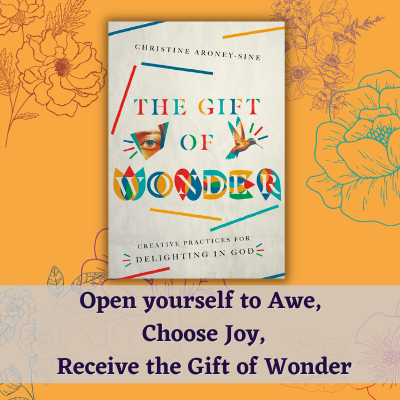 Explore what childlike characteristics shape us into the people God intends us to be. Be encouraged to develop fresh spiritual practices that engage all our senses and help us to live a new kind of spiritual life that embraces the wonder and joy that God intends for us. Embrace the gifts of Awe and Wonder; gifts that sustain us, practices that are relevant and important in these times. Whether the book, prayer cards, retreats, or supplemental handouts, you can find it all in our shop!
Explore what childlike characteristics shape us into the people God intends us to be. Be encouraged to develop fresh spiritual practices that engage all our senses and help us to live a new kind of spiritual life that embraces the wonder and joy that God intends for us. Embrace the gifts of Awe and Wonder; gifts that sustain us, practices that are relevant and important in these times. Whether the book, prayer cards, retreats, or supplemental handouts, you can find it all in our shop!
words and pictures by June Friesen, scripture via The Message
 What a glorious way to greet the morning! To be greeted by the rising of the sun that ultimately rises because of the Son. I have a friend who loves to put a twist on this greeting by saying ‘God Morning,’ in response to ‘good morning.’ And how appropriate that is because without God there would be no sun or sunrise to begin the day.
What a glorious way to greet the morning! To be greeted by the rising of the sun that ultimately rises because of the Son. I have a friend who loves to put a twist on this greeting by saying ‘God Morning,’ in response to ‘good morning.’ And how appropriate that is because without God there would be no sun or sunrise to begin the day.
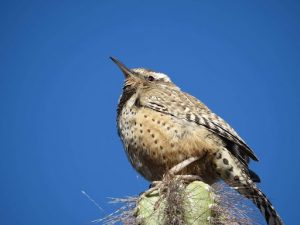 The second wonder of a new day’s beginning is the singing of the birds. At sunrise, it is a chorus of birds – God’s natural choir causing one’s heart to be lifted in praise for a brand new beginning to another day. My favorite Scripture is Psalm 19:1-9 which reflects on the wonder of creation.
The second wonder of a new day’s beginning is the singing of the birds. At sunrise, it is a chorus of birds – God’s natural choir causing one’s heart to be lifted in praise for a brand new beginning to another day. My favorite Scripture is Psalm 19:1-9 which reflects on the wonder of creation.
Psalm 19:1-9 (The Message)
1-2 God’s glory is on tour in the skies, God-craft on exhibit across the horizon.
Madame Day holds classes every morning, Professor Night lectures each evening.3-4 Their words aren’t heard, their voices aren’t recorded,
But their silence fills the earth: unspoken truth is spoken everywhere.4-5 God makes a huge dome for the sun—a superdome!
The morning sun’s a new husband leaping from his honeymoon bed,
The day-breaking sun an athlete racing to the tape.6 That’s how God’s Word vaults across the skies from sunrise to sunset,
Melting ice, scorching deserts, warming hearts to faith.7-9 The revelation of God is whole and pulls our lives together.
The signposts of God are clear and point out the right road.
The life-maps of God are right, showing the way to joy.
The directions of God are plain and easy on the eyes.
God’s reputation is twenty-four-carat gold, with a lifetime guarantee.
The decisions of God are accurate down to the nth degree.
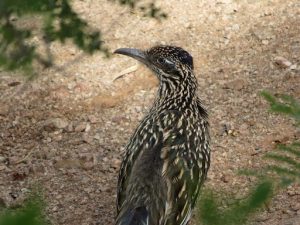 Today much of our world is struggling to find their way through time. For some it may be a struggle because of health issues. For others, it may be restrictions because of political or religious unrest. For others, it may be drastic changes in employment, housing, food availability, shortages or limited water supply as well as clean water availability. There is struggle because so many in the world today desire to be in control with little regard for others. Over the last couple of months, we have talked about all the things that are or have become like ashes in our lives as well as things that maybe we should let become ashes in our lives. Yet it is also important that we realize that new life can be made from as well as out of ashes.
Today much of our world is struggling to find their way through time. For some it may be a struggle because of health issues. For others, it may be restrictions because of political or religious unrest. For others, it may be drastic changes in employment, housing, food availability, shortages or limited water supply as well as clean water availability. There is struggle because so many in the world today desire to be in control with little regard for others. Over the last couple of months, we have talked about all the things that are or have become like ashes in our lives as well as things that maybe we should let become ashes in our lives. Yet it is also important that we realize that new life can be made from as well as out of ashes.
As I take time to read the above verses from time to time it is the last three verses that are of particular challenge to me and I might say that they are also a comfort to me.
It is God’s revelation that is whole, perfect and complete. In our Scriptures we see that it is He who is the Creator and designer of this great universe as well as this planet earth that we as humans call home during our physical lifetime. God attempts to help each of us during our lifetime to embrace Him and live our lives in harmony with others as well as creation. Second it tells us that He has signposts that show us how to live. For some that may be more of a challenge than others however I believe the Psalmist is referring to those who are God-fearing believers and many of those signs of help come as we become familiar with the whole of Scriptures. As I read the next phrase I pondered – ‘what is a life map?’ Once again when we choose to follow God and also read His Scriptures, we find references throughout the Old and New Testaments that help us make good choices and give us guidance in our lives. It says these life maps bring joy into our lives. I would add that one can and does find joy as well as peace when making godly choices in life. The directions of God are plain and easy on the eyes. Again, I find that God makes things pretty obvious most of the time; there may be a time or two when one has to look a little harder but that may be because we have gotten sidetracked in some way or other in our walk with Him. As these verses end it says that there is a lifetime guarantee for each one of us who chooses to embrace this walk with God. A life time guarantee? Yes, and that brings me to another Scripture that Jesus shared with His followers when He was still here on earth from John 14:1-7:
“Don’t let this rattle you. You trust God, don’t you? Trust me. There is plenty of room for you in my Father’s home. If that weren’t so, would I have told you that I’m on my way to get a room ready for you? And if I’m on my way to get your room ready, I’ll come back and get you so you can live where I live. And you already know the road I’m taking.”
5 Thomas said, “Master, we have no idea where you’re going. How do you expect us to know the road?”
6-7 Jesus said, “I am the Road, also the Truth, also the Life. No one gets to the Father apart from me. If you really knew me, you would know my Father as well.”
Yes, this is a great truth and a great promise to embrace, especially in times of troublesome issues, whether in our personal lives, or in our communities, or in the world. ‘Don’t get rattled’ or don’t get stressed out – so easy to say or even think or but to try to believe for oneself? Making it a personal practice can become one of the greatest challenges in one’s daily life.
As I have considered these Scriptures once again – and as I take regular walks and hikes it seems to me that there was a great reason behind God’s plan of creating a garden as He did in the beginning for humanity. God knew that it would be in nature we would be able to see His glory on display as well as embrace His presence through the senses that He gave us. I invite you to join me on a daily walk in my life.
TODAY I WALKED WITH GOD
Good morning my alarm says to me –
Another day is here for you to greet –
I rise from my bed of rest –
And I prepare myself for a walk –
Sasha, our shepherd is always up for a walk upon rising.

Depending upon what time of the year the sights and sounds vary –
It is springtime for us now so
The sun is beginning to rise to give light to the day,
Sometimes the sunrise is filled with a myriad of colors,
Sometimes it is a ball of fire and other times it just gives light to the morn.
There is the beauty of many kinds of trees with many kinds of leaves,
They grace life with shapes, sizes and places for little homes,
Little homes for a variety of birds to nestle as well as raise their little ones,
And oh, how those birds begin to chirp in a great chorus as the sun rises.
Different trees seem to be home to different songs –
There are sparrows, chickadees, doves, pigeons, small black birds, as well as a family of hawks,
Some are already on the hunt for morning morsels while others are merely awaking.
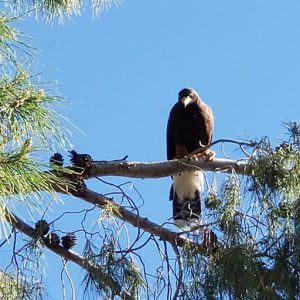
Then later in the day there are a couple more walks along this familiar path,
There may be children sighted playing on the playground,
Adults doing some gardening, and others just enjoying the moment –
There may be clouds in the sky, sometimes a sprinkle of rain or two….
And if one is really fortunate one of God’s beautiful rainbows arched in the skies.
As I walk through the beauty God gifts on this earth,
My heart is turned heavenward in gratefulness –
I give thanks for eyes to behold such incredible beauty,
I give thanks for ears that embrace the sounds delicate and sometimes rather boisterous,
I give thanks for my nose which blesses me with odors, some delightful and others not so much,
I give thanks for my hands that hold my dog’s leash to keep her safe,
I also give great thanks for my legs and my feet that hold me up and walk me several miles each day,
I give thanks to God for allowing me the gift of getting to know Him so intimately over my lifetime –
I now invite you to take some time in your day, or days
To embrace the wonderful creation around you with praise to God –
It will help one embrace life as it has been, as it is and as it will become
When God is one’s focus on the walk through each day of life.
Amen and amen.
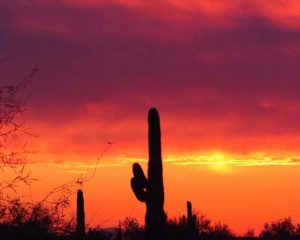
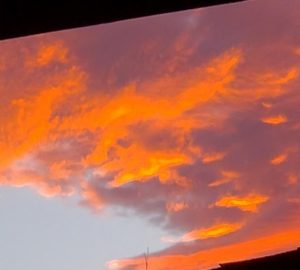
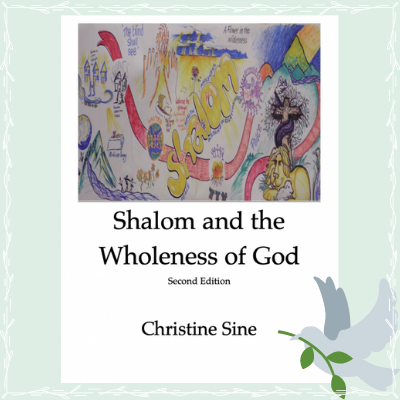 We all need the Wholeness of God…this resource includes reflections and activities for coping and thriving during the COVID-19 challenges in search of shalom as well as hope for restoration during and after this period of social distancing.
We all need the Wholeness of God…this resource includes reflections and activities for coping and thriving during the COVID-19 challenges in search of shalom as well as hope for restoration during and after this period of social distancing.
A couple of weeks ago I asked my Southern Hemisphere friends what symbols and rhythms gave meaning to the seasons of the liturgical year for them. I thoroughly enjoyed their responses which helped me reimagine the symbols and celebrations I find most meaningful as the world turns and the seasons change.
Evidently when Europeans moved to the Southern Hemisphere they took the symbols and celebrations they were familiar with along because these gave them security and connection. Winter symbols and rituals for Christmas made them feel at home when they celebrated Christmas in the middle of summer. Yet these symbols and the rituals they were encouraged to use didn’t help them connect to their new earthly home and its seasons. This disconnect meant that their faith became more and more disconnected from the world in which they lived.
I may not live in the Southern Hemisphere now but I wonder if we suffer from the same disconnect wherever we live. It’s probable that Advent wreaths originate from the custom of removing wagon wheels over the winter – hanging them on the walls and then decorating them with greenery and candles. Now I don’t know about you but I don’t remove my car wheels over the winter and much as I love poinsettias at Christmas and have no desire to let go of them, I know they don’t help me connect to the beautiful Pacific NW where I live. I must confess, as I share in my recent book Digging Deeper, I soon became bored with Advent wreaths too, and went looking for other symbols and practices to help connect me to where I live. I have done the same for Easter, and for other celebrations that are important to me.
This journey started with replacing Advent wreaths with contemplative gardens. These gardens first held succulents, but increasing contain local plants and involve seasonal activities, like sprinkling seeds on the soil and watching it germinate and grow at Easter. They also often connect to world events like the bushfires in Australia or the war in Ukraine as well as to seasonal activities like beachcombing in summer.
Now I am wondering how I can make more of my seasonal celebrations link me to the world in which I live. One of the privileges of living in the Pacific NW is that so much of our Christmas greenery is locally grown. I love walking through a Christmas tree lot at the beginning of the season inhaling the wonderful fragrance of pine leaves One year I even got to go out to a Christmas tree farm and help cut down our own tree – a wonderful way to connect to this part of God’s good earth in which I live.
However I don’t want Christmas and Easter to be my only meaningful celebrations. My awe and wonder walks definitely help me with connecting my seasonal rituals to the land too. I love to wander our neighbourhood drinking in the beauty of the gardens around me. Unfortunately, most of them contain little local flora apart from pine trees, so I need the occasional good walk in one of our local forests to really appreciate the beauty of this part of the world.
Looking for sights and sounds and objects that connect me to the four seasons of the year is now one of my favourite pastimes and my list of possible ways to link my spiritual practices more firmly to God’s good earth grows all the time. Welcoming the day with a short prayer at sunrise and saying goodnight with another as I go to bed is one way. Collecting pine cones and leaves that fall from the deciduous trees and then decorating them to place around the house in the autumn is another . Some of my friends are foragers – searching for mushrooms or picking local fruit like huckleberries provide wonderful seasonal forays into the natural landscape that help to make us feel at home in the land in which we live. Or like me you might enjoy beach combing in the summer. Listening to the waves and enjoying an oceanside stroll is a wonderful summer ritual. I am also currently investigating how I can introduce more local plants into my own garden as I think this is an important way to anchor ourselves in the place in which we live and its seasonal changes.
We are designed to be linked with the earth, to nurture and steward it and there is no better way to do that than by connecting our celebrations to rituals and rhythms in our natural neighbourhood. This doesn’t mean that we throw out all our established seasonal traditions, but it does mean we should intentionally think about other symbols and rhythms that could connect us to God’s good earth and the seasonal changes in the place where we live.
It is an exciting journey of discovery and I hope you will join me on it.
What are habits and rhythms that help you connect your faith to the place in which you live and to the seasons in which you find yourself?
What could you do to strengthen these habits or create new ones?
Who could help you on your journey?
With our latest Facebook live session and spend some time considering your own rhythms and rituals.
Available as an online course, sign up here to gain 180 days of access while you work through this retreat at your own pace. Join Lilly Lewin and Christine Sine in the awe of the broad array of summer symbols that can gain spiritual significance for us when we stop and think about them. Everything from beachcombing to putting on suntan lotion can be the inspiration for practices that draw us closer to God.
Ground yourself in the earth and its summer season where you live and find the ways that God is speaking through it – all the details can be found here!
As an Amazon Associate, I receive a small amount for purchases made through appropriate links.
Thank you for supporting Godspace in this way.
When referencing or quoting Godspace Light, please be sure to include the Author (Christine Sine unless otherwise noted), the Title of the article or resource, the Source link where appropriate, and ©Godspacelight.com. Thank you!

